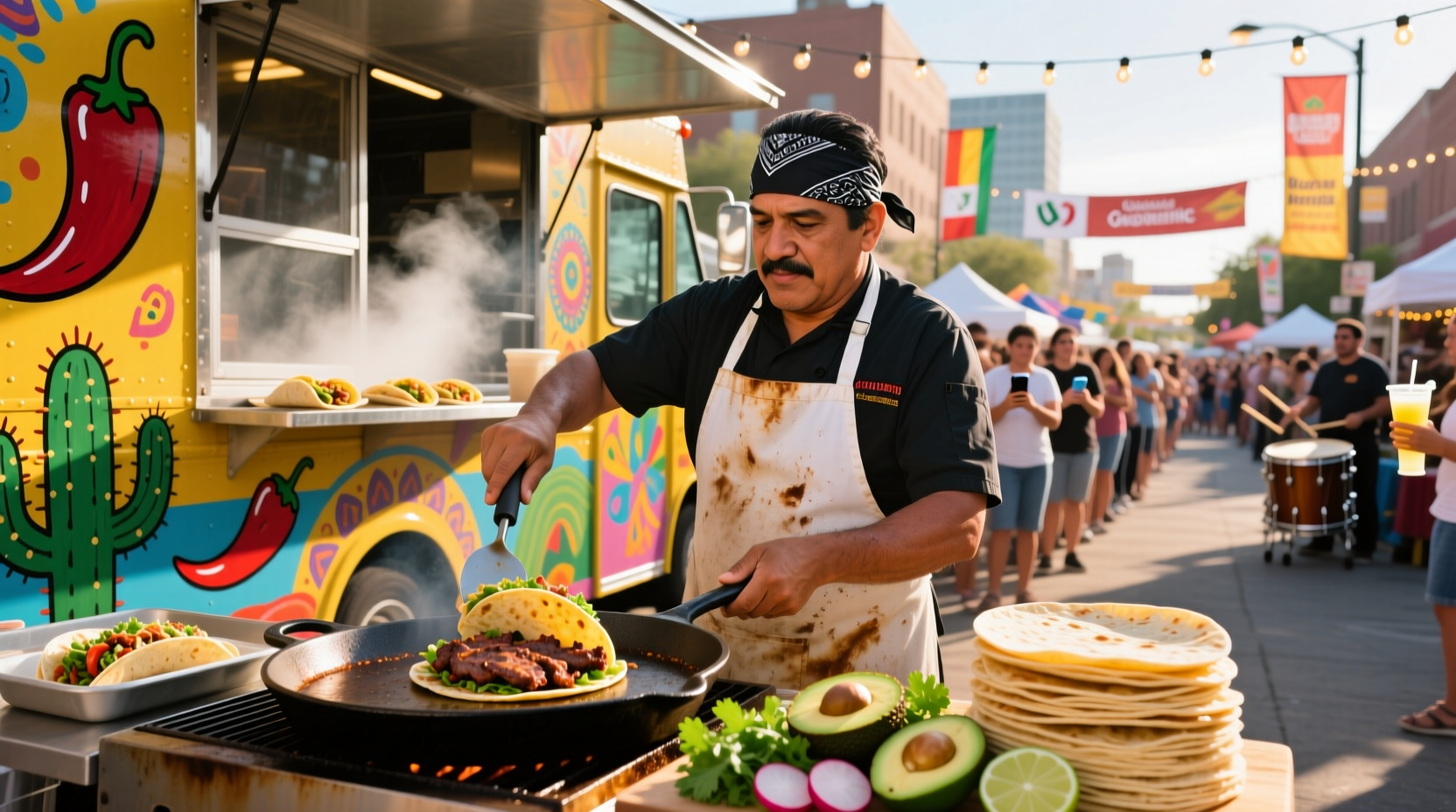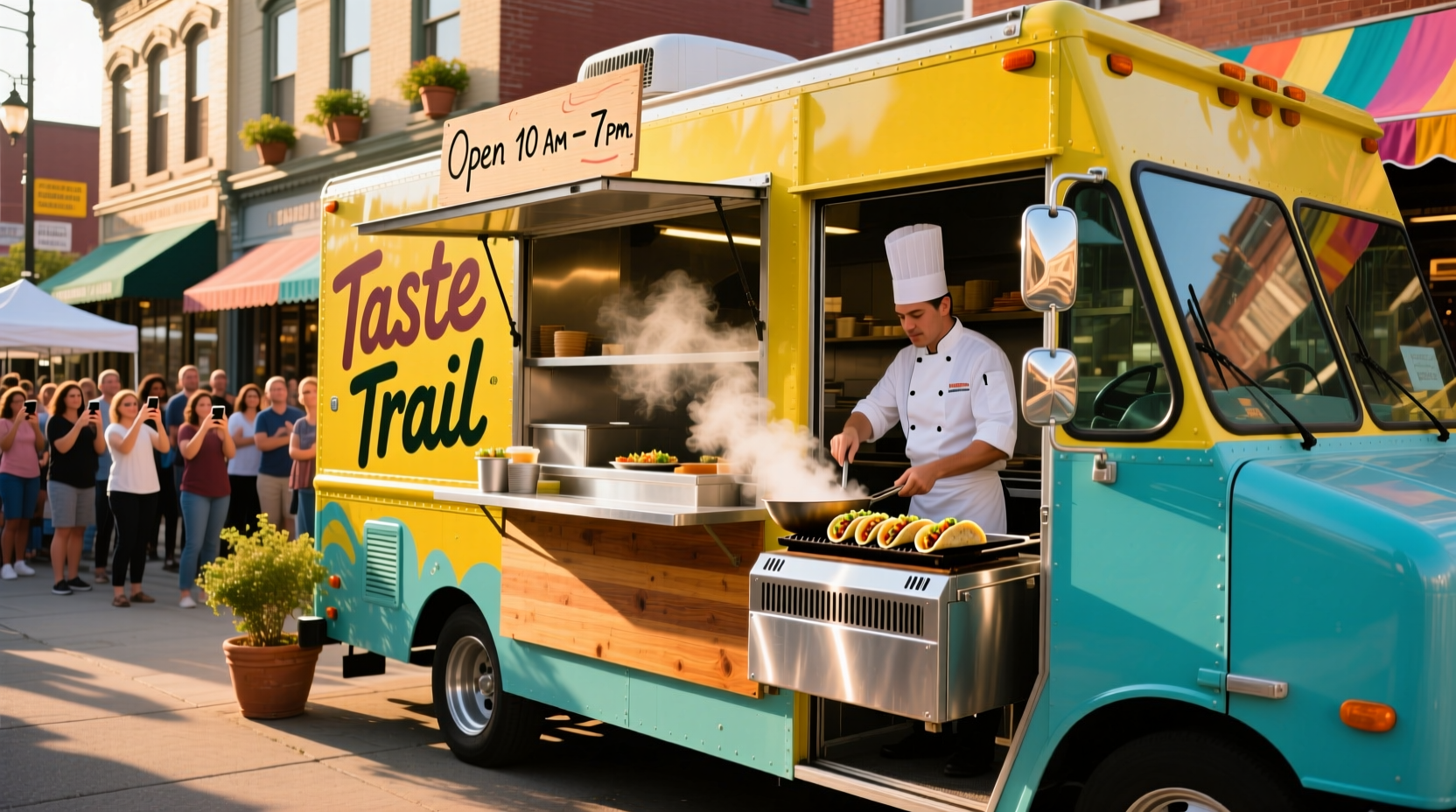From Concept to Curbside: Your Practical Food Truck Launch Roadmap
Launching a food truck combines culinary passion with entrepreneurial grit. Unlike traditional restaurants, mobile food businesses face unique challenges and opportunities that demand specialized planning. This guide delivers actionable steps based on real industry data and successful operator experiences—no fluff, just what actually works when starting a food truck business.
Understanding Your Food Truck Reality Before You Begin
Before investing in that shiny trailer, understand what you're truly signing up for. Food trucks operate in a completely different business environment than brick-and-mortar restaurants. The mobility that seems like an advantage comes with regulatory complexities and operational constraints that can make or break your venture.
| Business Aspect | Food Truck | Traditional Restaurant |
|---|---|---|
| Startup Cost | $75,000-$150,000 | $150,000-$750,000+ |
| Required Space | Vehicle + storage facility | Leased commercial space |
| Customer Access | Mobile but limited by location regulations | Fixed location, consistent foot traffic |
| Regulatory Complexity | Multiple jurisdictions (city, county, health) | Primarily health department and business licensing |
| Failure Rate (Year 1) | Approximately 60% | Approximately 50% |
Source: U.S. Small Business Administration Food Service Industry Report 2024
Your Food Truck Development Timeline: What to Expect
Many aspiring food truck owners underestimate the time required to properly launch. Rushing through critical steps leads to costly mistakes. Here's a realistic timeline based on successful operator experiences:
| Phase | Duration | Critical Activities | Common Pitfalls |
|---|---|---|---|
| Research & Planning | 2-4 months | Market research, business plan, financial projections | Skipping local regulation research |
| Legal Setup | 1-3 months | Business registration, permits, insurance | Assuming one permit covers all requirements |
| Vehicle Acquisition | 2-6 months | Purchasing/refurbishing, equipment installation | Underestimating build-out costs |
| Pre-Launch | 1-2 months | Menu testing, staff training, marketing | Inadequate menu testing with target customers |
| Launch | Ongoing | Location strategy, customer acquisition | Poor location selection based on assumptions |
Source: National Restaurant Association Food Truck Operations Study 2023
Navigating Legal Requirements: Where Most Food Truck Dreams Die
Food truck regulations vary dramatically by location—what works in Austin might be illegal in Chicago. Understanding these differences isn't optional; it's the foundation of your business.
Essential permits you'll likely need:
- Business license (city and county)
- Mobile food vendor permit
- Food handler's permits for all staff
- Health department certification
- Seller's permit for food sales
- Parking and vending permits for specific locations
The biggest mistake new food truck owners make is assuming requirements are consistent across city boundaries. In California, for example, Los Angeles County requires a separate health permit from the city of Los Angeles, plus additional permits for operating in specific neighborhoods. Always check with your local health department and city business licensing office before finalizing your plans.

Vehicle Selection: Making Smart Investments That Pay Off
Your truck is your kitchen, storefront, and primary asset. Choosing wisely impacts everything from daily operations to long-term profitability.
When evaluating food truck options, consider these critical factors:
- Layout efficiency: Kitchen workflow directly impacts service speed and staff fatigue
- Equipment quality: Commercial-grade appliances withstand constant vibration
- Maintenance history: Previous usage affects reliability and repair costs
- Expansion potential: Can the layout accommodate future menu changes?
According to industry surveys, food truck owners consistently report wishing they had invested more in proper ventilation systems and electrical capacity during initial build-out. "I underestimated how much power my commercial refrigerator and flat-top grill would need," shares Maria Chen, owner of "Spice Route Eats" in Seattle. "Rewiring cost me two weeks of lost revenue after launch."
Menu Development: Profitability Within Physical Constraints
Your menu is your business blueprint. In a food truck, less is often more—both operationally and financially.
Successful food truck menus share these characteristics:
- Limited to 5-7 core items that share common ingredients
- Designed for quick assembly (under 3 minutes per order)
- Include at least one signature item that differentiates you
- Offer vegetarian/vegan options (increases customer base by 30%+)
- Price points that maintain 65%+ food cost margin
When developing your menu, focus on dishes that travel well and maintain quality in limited space. Complex plating or delicate presentations often fail in the food truck environment. Test your recipes under real operating conditions—what works in a test kitchen might not function when you're moving between locations all day.
Location Strategy: Finding Your Profit Zones
Where you park determines 80% of your success. The best locations combine high foot traffic with minimal competition and favorable regulations.
Effective location scouting techniques:
- Visit potential spots at different times to assess foot traffic patterns
- Build relationships with property owners for private events
- Join food truck associations for access to permitted locations
- Use social media to announce your daily locations in advance
- Track sales by location to identify your most profitable spots
Remember that location regulations change frequently. What was a prime spot last month might now be restricted due to new city ordinances. Stay informed through your local business development office and food truck associations.
Launch Strategy: Turning First Customers into Regulars
Your launch sets the tone for your entire business. A soft launch with targeted marketing builds momentum without overwhelming your new operation.
Effective launch tactics:
- Start with limited hours at 1-2 reliable locations
- Offer "friends and family" discount days for initial feedback
- Implement a simple loyalty program from day one
- Use Instagram geotags to build location awareness
- Collect email addresses for weather-related closure notifications
Track your key metrics religiously: cost per serving, customer acquisition cost, average transaction value, and daily sales by location. These numbers will guide your growth decisions far more effectively than gut feelings.











 浙公网安备
33010002000092号
浙公网安备
33010002000092号 浙B2-20120091-4
浙B2-20120091-4